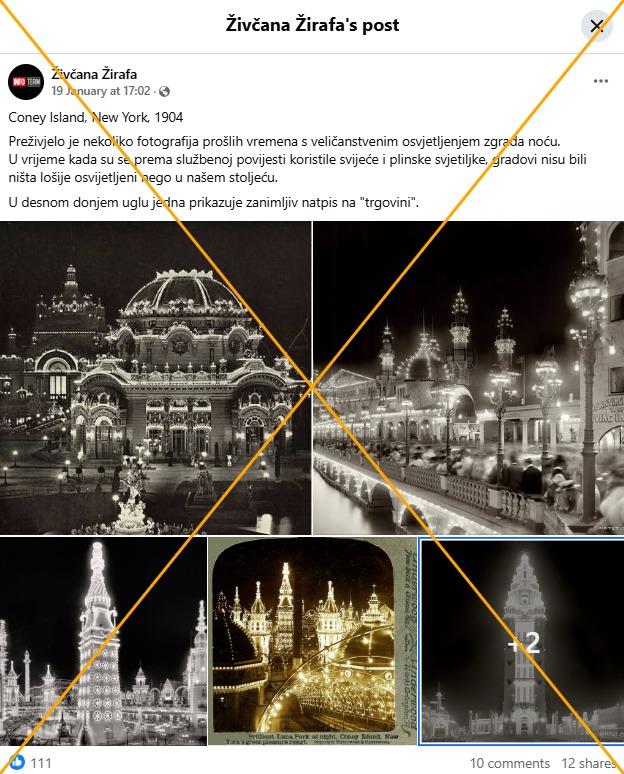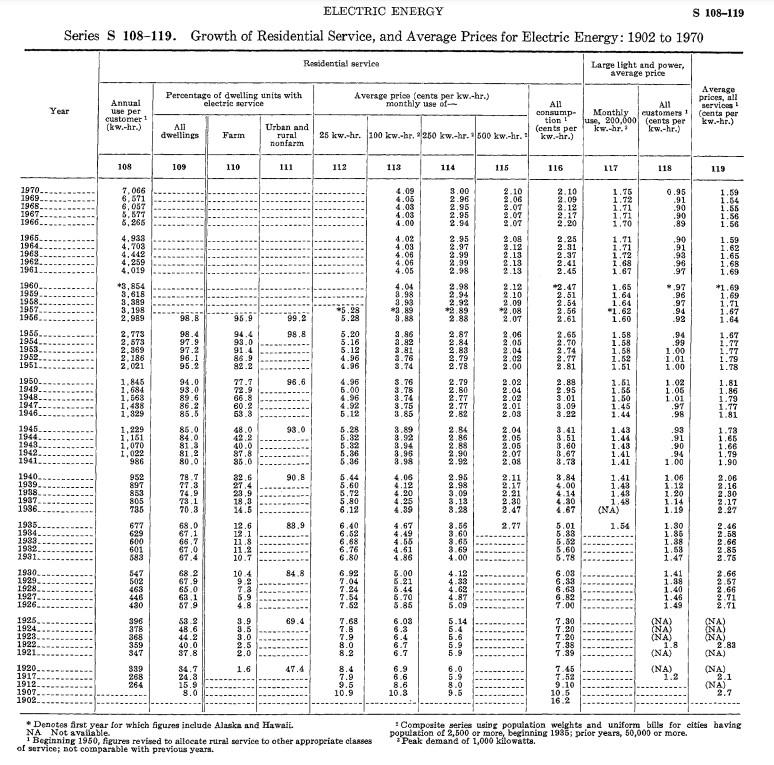
Photos of Coney Island's Luna Park from 1904 do not disprove 'official history'
- Published on April 22, 2025 at 16:55
- 4 min read
- By Ivan FISCHER, AFP Croatia
A Facebook user in Croatia posted on January 19, 2024 a series of vintage pictures of brightly lit buildings, claiming they disproved “official history”. “A few photos of past times have survived, showing magnificently lit buildings at night,” the user wrote. “At a time when, according to official history, people were using candles and gas lights, cities were not lit any worse than in our century.”
According to the user, the photos of New York's Coney Island were taken in 1904. He also singled out a particular photo, saying: “One is showing an interesting sign on a ‘shop’,” the user said, referring to a photo that shows a building with the writing “Infant incubators with living infants”.
The post was shared multiple times on Facebook, and the same set of images was viewed more than 1500 times on Telegram.
However, the images do not disprove historical facts. The electrification of New York began in the 1880s but was far from being widespread in 1904. Coney Island’s fair was an unusual attraction thanks to its numerous electrical lights, an expert told AFP.
The building identified with the “infant incubators” sign was an exhibition demonstrating life-saving medical advancement, which was held to finance the incubators and the treatment of prematurely born infants.

Using reverse image search, AFP found the sources for the photos in the post.
While the majority of images show Coney Island in 1904 or 1905 (archived here and here), one of the photos shows the Temple of Music building from the 1901 World Fair in Buffalo, and another shows the "Moving Picture of Hardware" display by Simmons Hardware Company at the St. Louis World Fair in 1904 (archived here).
The Facebook post was mistaken in saying that the photos disprove the “official history” of electricity, suggesting that cities were as well-lit as today.
The first commercial power plant was opened by Thomas Edison in lower Manhattan in 1882 (archived here). According to the NYC Department of Records (archived here), this power plant lit streets and buildings in about 80 locations in lower Manhattan by September 1882. The New York Historical Museum says the plant had 513 customers by 1883.
Electricity historian Joseph J. Cunningham from Rome's La Sapienza University told the New York Times in 2013 that, by the early 1900s, anyone in Manhattan, Brooklyn, Queens, Staten Island, Bronx or Westchester "that wanted utility power could obtain it, although some of the more semirural areas in outer Queens and especially lower Westchester may have required the customer to finance an extension of the lines".
Electricity was novel to most Americans
Coney Island's Luna Park was opened in 1903 (archived here). It featured 250,000 electric lights and several electric-powered rides. It became the first and most famous amusement park in the world -- and is the source of the common Croatian word for "amusement park" (archived here).
"In 1904, while electric power was not new, large-scale electrification like that at Luna Park was still novel to most Americans," said Dee Bowers, archives manager at the Brooklyn Public Library, told AFP on February 3, 2025. "Downtown Manhattan had been electrified since the 1880s, but it took much longer for widespread electrification to reach the farther-flung parts of the outer boroughs. Luna Park’s success inspired several copycat parks and some of them were even named simply 'Electric Park'.”
Bowers stressed that only select areas had been electrified from the 1880s-early 1900s, so electrification "was still comparatively uncommon", especially in private homes.

According to the United States Census Bureau's Historical Statistics, only eight per cent of all households in the US had electricity in 1907. This figure reached 48.6 per cent in 1924, and it took until 1949 (page 17) for the electrification of homes to surpass 90 per cent.
Infants were saved, not sold
Answering a question about the "Live human infants" sign on the building, Bowers referred to a recent blog (archived here) written by Brooklyn Public Library archivist, Alice Griffin. The so-called "infant incubators" were an attraction at both Luna Park and Dreamland amusement parks in Coney Island (archived here).
"There was NEVER a shop selling infants in Coney Island," said Charles Denson, director of the nonprofit Coney Island History Project, on January 24, 2025. "There were medical incubators for infants. The premature babies were not for sale," stressed Denson.
Denson referred to his project's page on Dr Martin Arthur Couney (archived here), who made his clinic into a sideshow exhibit to finance the incubators and medical staff while charging nothing to the parents of the prematurely born babies. His medical staff included five wet nurses and fifteen medical technicians.
According to Couney's records (archived here), his exhibits on Coney Island treated more than 8,000 babies and saved the lives of some 6,500 (archived here).
Copyright © AFP 2017-2025. Any commercial use of this content requires a subscription. Click here to find out more.
Is there content that you would like AFP to fact-check? Get in touch.
Contact us
